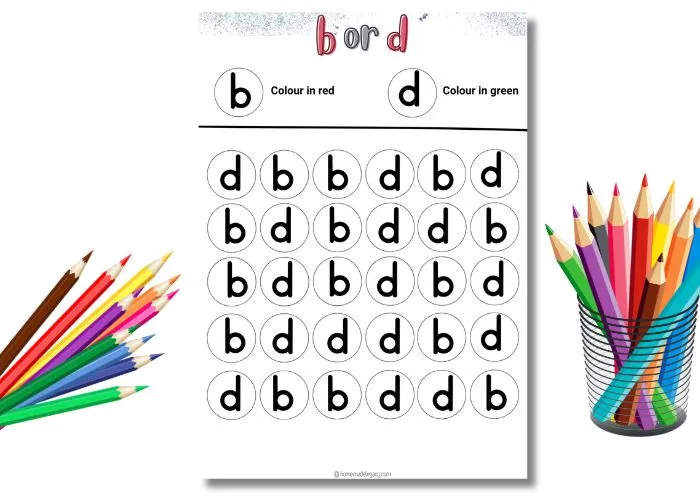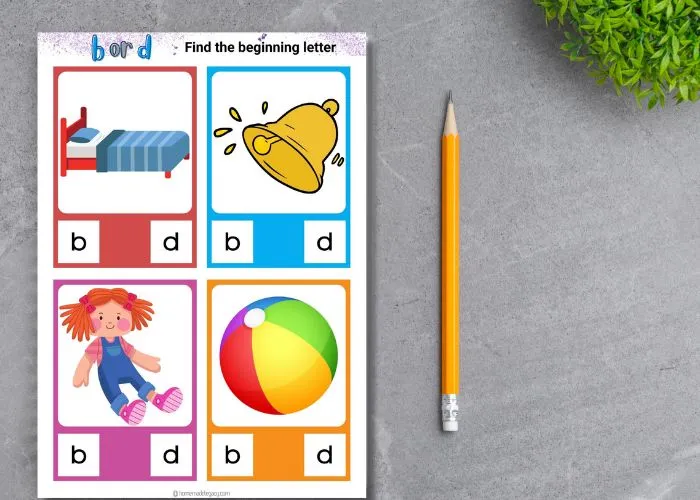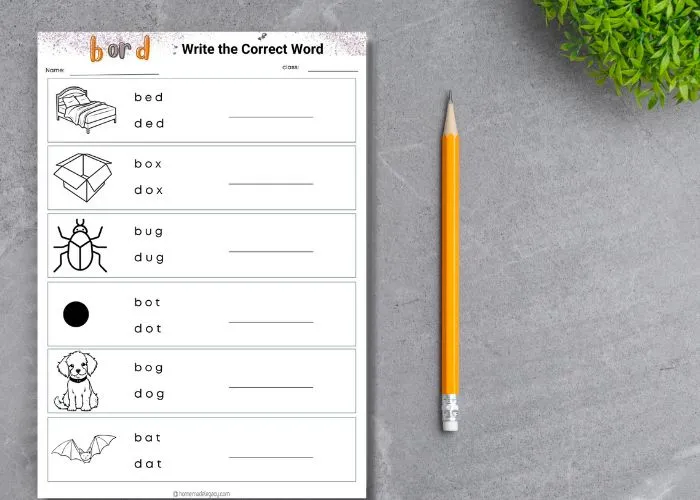Letter reversal is a typical issue for kids learning to read and write. Most children outgrow this by the age of 7.
Many believe that letter reversals indicate dyslexia, but that’s often not the case. Read more about letter reversals.
The letters b and d are the ones that children often mix up when they start reading and writing. We have created a set of b or d worksheets focused on helping kids recognise these letters.
These worksheets include activities like colour by letter, letter identification, tracing, writing practice, and beginning sound exercises.

This collection includes 14 pages, and you can download all of them for free at the bottom of the page.
You can use all the activities together or select specific ones based on individual preferences or needs.
Colour b and d Letters
Colour by letter activity sheets are a great way to help kids who are just starting to learn letters.
By focusing on visual recognition, this activity helps children build the skills they need to confidently tell these two letters apart.

Colour By Letter Worksheets
This is another colouring activity that helps kids recognise the letters b and d.
They need to pay attention to the letter before colouring it.

Find Beginning Letter
This activity helps identify the correct beginning sound for each word.
Under each image, children should circle the correct beginning sound, either b or d.

Write b or d Words
The next activity here is finding the correct word.
In the picture, the word is shown with both b and d, one of which is wrong. Children will spot the correct word and write it in the space provided.

FREE b or d Worksheets
Practicing these activities will help kids better understand how to write and recognise the letters b and d.
Simply download all the worksheets below. It comes as a pdf file and print the pages you would like your children to work on.

Other Activities To Master Letter Recognition Skills
Matching Games
Memory games are a perfect way to start. Whether it’s an alphabet memory game or another game, these will certainly help children improve their visual memory.
You can also use flashcards or printables to create matching games.
Alphabet Songs
You can add music into learning with catchy alphabet songs. Singing along not only helps with letter names but also helps with memorisation.
Magnetic Letters and Puzzles
Use magnetic letters or alphabet puzzles to encourage hands-on recognition. Kids can arrange letters in sequence or match them to corresponding words or objects.
Sensory Writing Activities
You can let kids write letters in sand, shaving cream or finger paint. These tactile activities are especially helpful for kinesthetic learners.

Leave a Reply